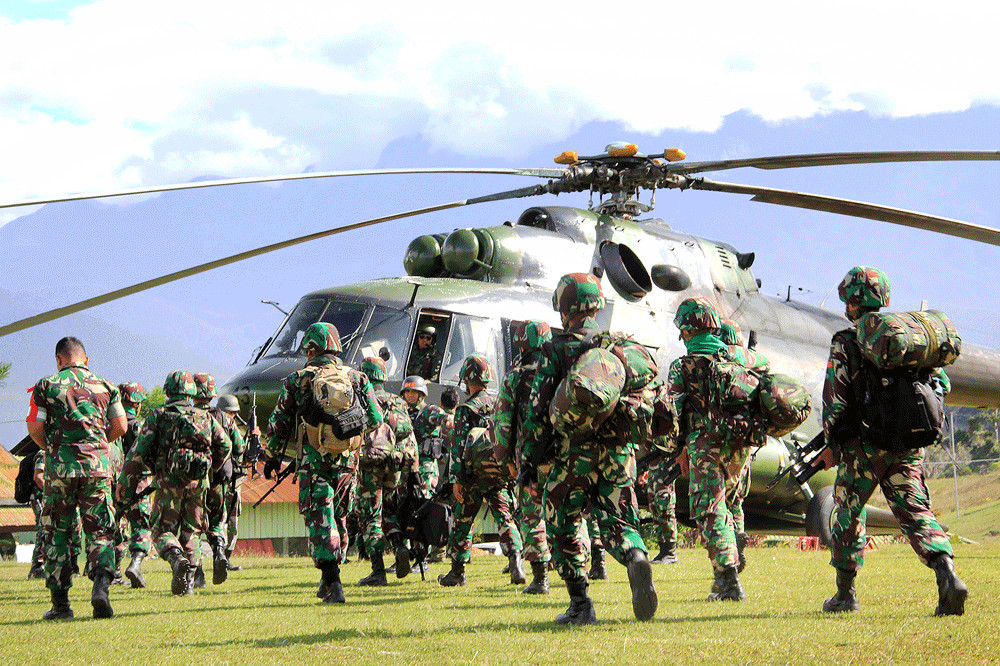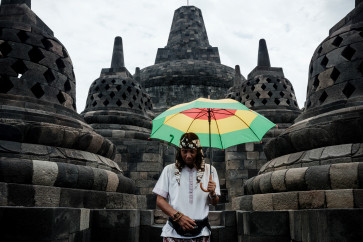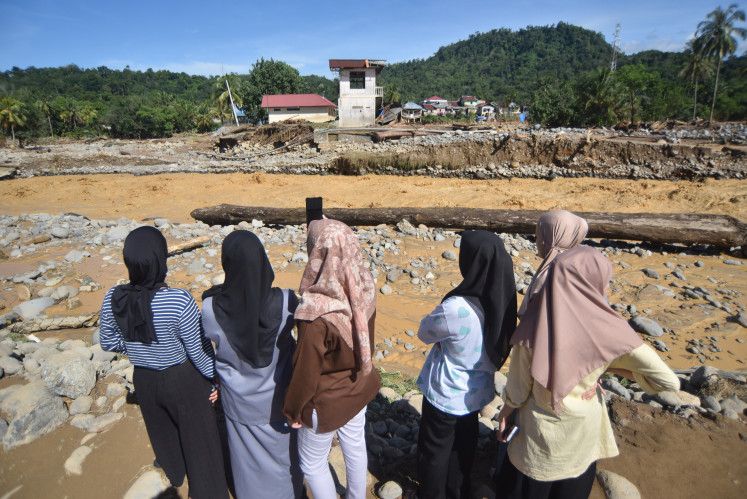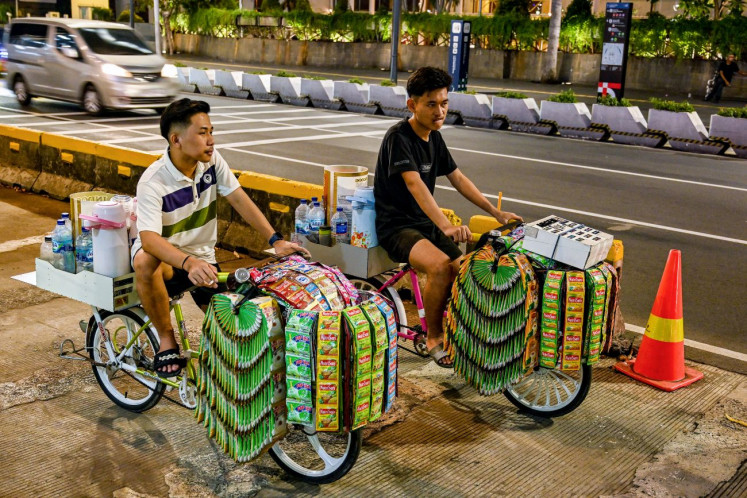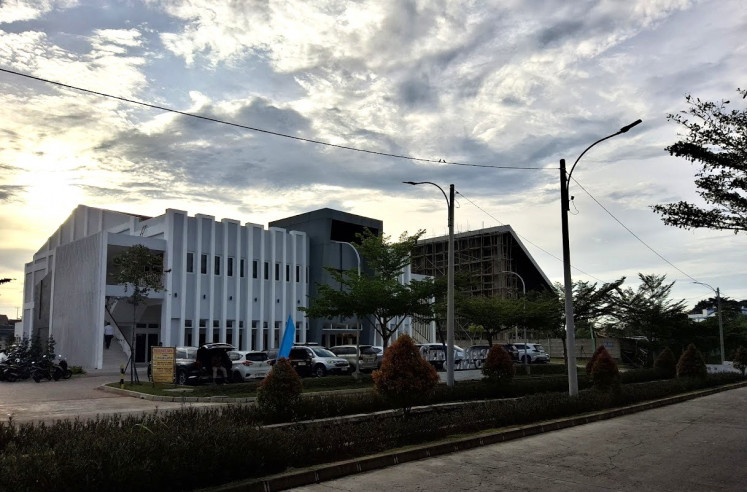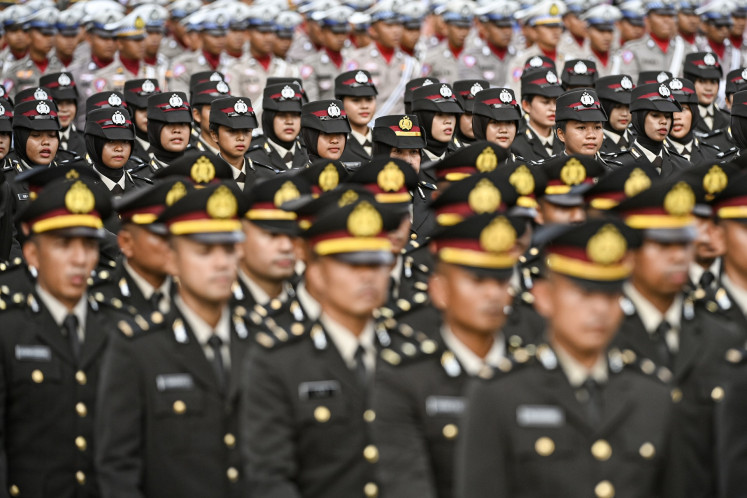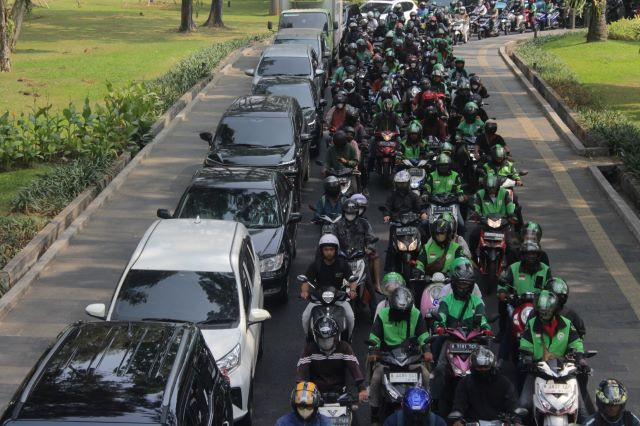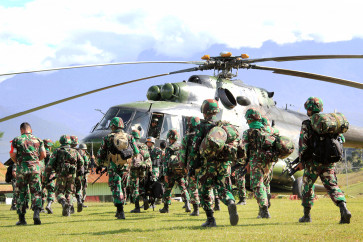Popular Reads
Top Results
Can't find what you're looking for?
View all search resultsPopular Reads
Top Results
Can't find what you're looking for?
View all search resultsRefugees at the brunt of Papua armed conflict
The conflict in Nduga, Papua, between the military and independence fighters, led by Egianus Kogoya, a young man from Nduga regency, has been unfolding for over three months with few signs of ending. The armed conflict was triggered by the killing of 31 construction workers of PT Istaka Karya in Yigi district, Nduga regency in Papua’s highland.
Change text size
Gift Premium Articles
to Anyone
T
he conflict in Nduga, Papua, between the military and independence fighters, led by Egianus Kogoya, a young man from Nduga regency, has been unfolding for over three months with few signs of ending. The armed conflict was triggered by the killing of 31 construction workers of PT Istaka Karya in Yigi district, Nduga regency in Papua’s highland. Isolated operation zones in 16 out of 32 districts of the regency have led to evacuation of people from the neighboring Nduga including Jayawijaya, Lanny Jaya, Yahukimo, Asmat and Mimika.
The logic of the conflict has been highly contested between the security apparatus, mainly the Indonesian Military (TNI) and the pro-independence fighters of the Papua National Liberation Army (TPN-OPM). The former emphasizes the security threat posed by the guerillas, blamed for disrupting the government-initiated road projects in the area. The guerillas, meanwhile, cite self-determination, rejecting all central government developmental projects across Papua. These contesting views have found no common ground to resolve the long-running conflict.
Nduga along with Lanny Jaya, Puncak, Puncak Jaya, Yahukimo and Mimika areas are locally deemed as the red zones, given the historical record of prolonged conflicts and bases for pro-independence guerillas. Since the early 1960s, Nduga was marked as a military operation zone.
The well-known among such operations was the 1996 Mapenduma Operation to rescue foreign researchers. Some refugees still remember how their houses were burned and their relatives killed with no further investigation to hold those perpetrators to account. Such stories of military operations have been passed down to children in the regency, a refugee said.
Such a conflict story and memory will be produced by the recent joint police-military operation. The operation starting last December, with code-name “Operasi Nemangkawi”, has killed three army soldiers, one brigade-mobile officer and 25 civilians in Nduga and Wamena as recorded by local volunteers.
With no post-conflict trauma healing service for children refugees, a strong sense of independence or motivation to join the guerrilla fighters can be expected in the coming years.
The recent deployment of 600 military officers from the Hasanuddin military command of Makassar, South Sulawesi, comprising 450 raider infantry members and 150 from the army engineering corps (Yon Zipur) causes another concern, including among refugees in Wamena. The 600 military officers from Makassar are joined with another raider battalion from Sentani in Papua’s capital, Jayapura, and another army engineering detachment unit from Wamena, of the Cendrawasih Military Command in Papua.

